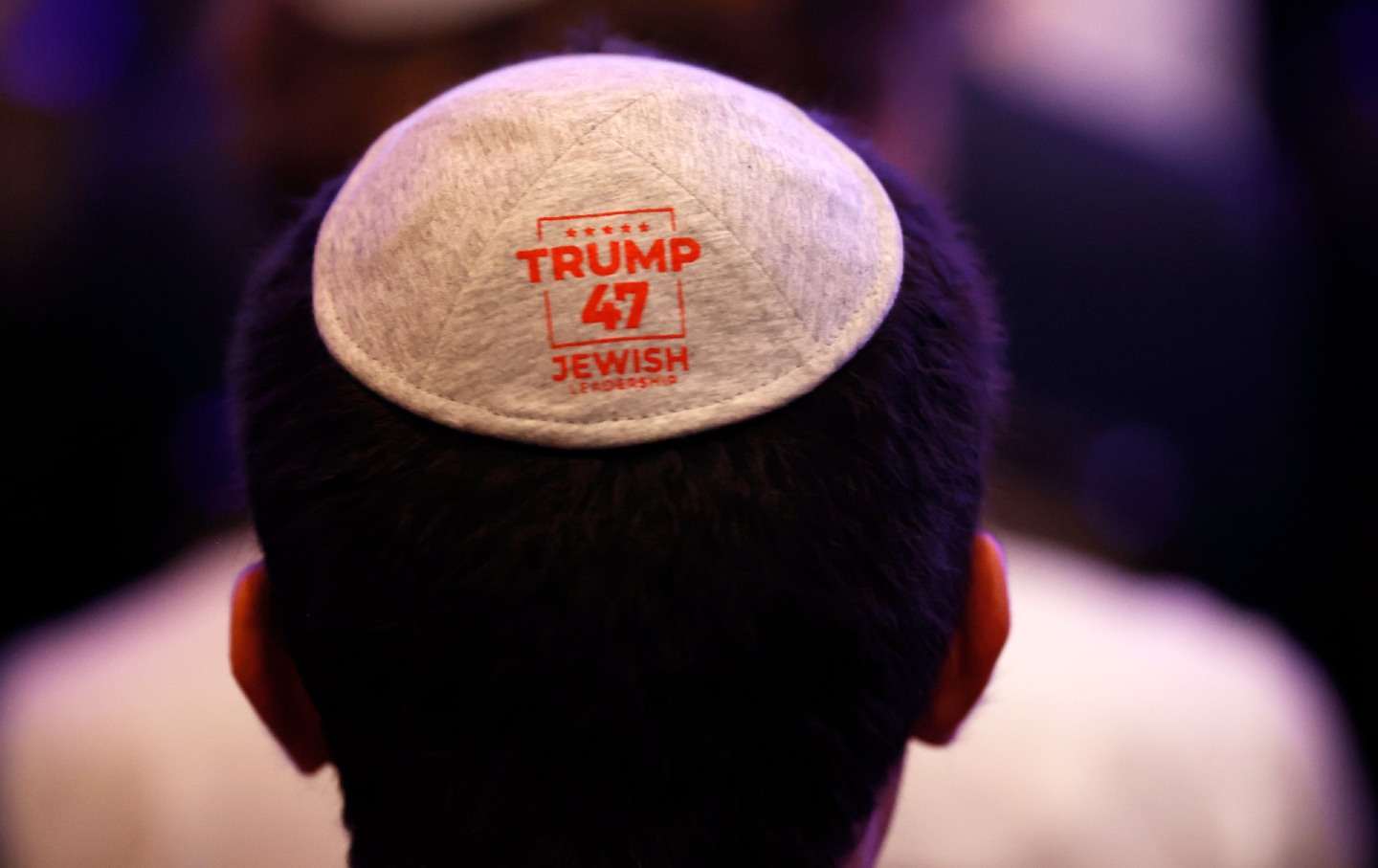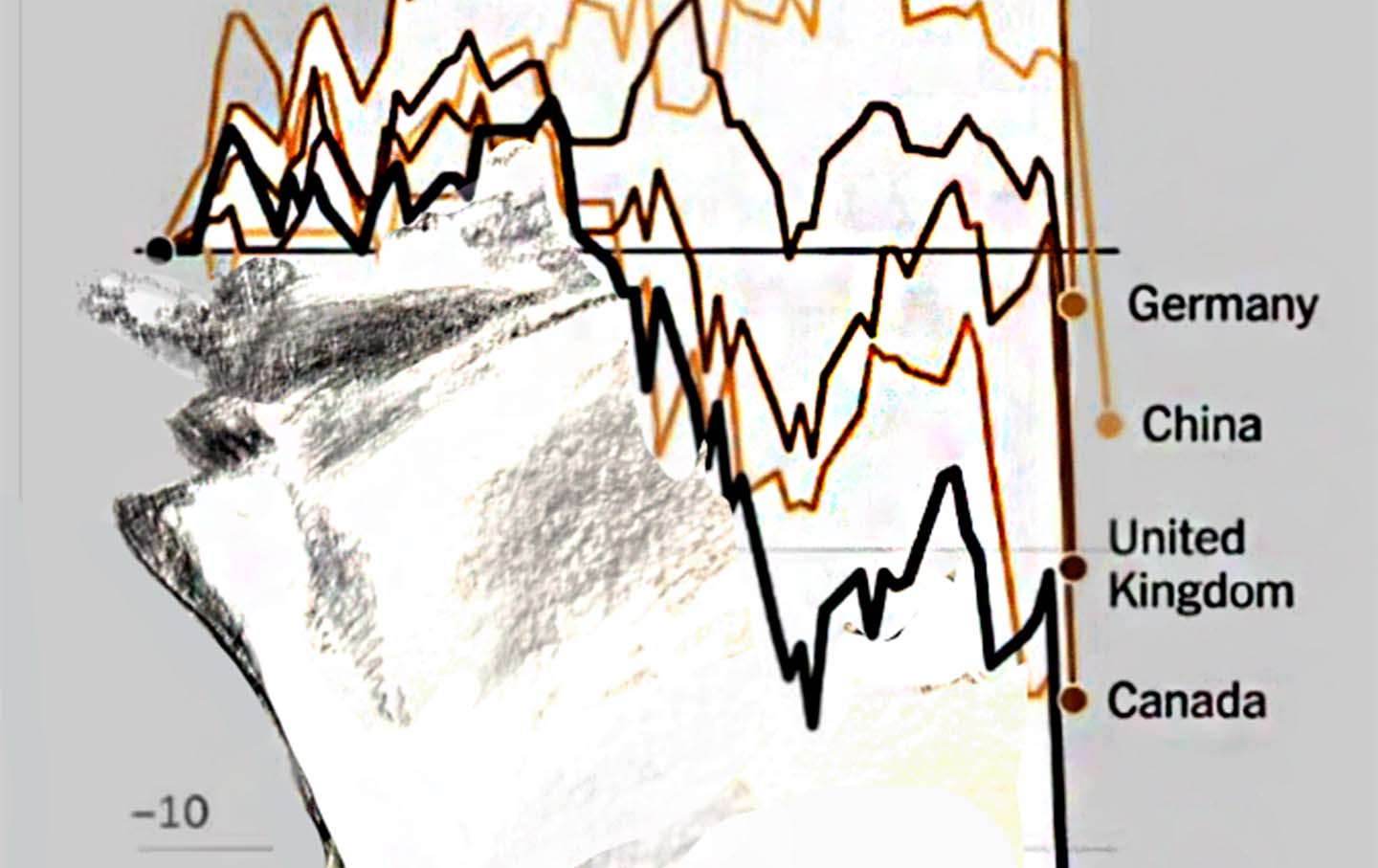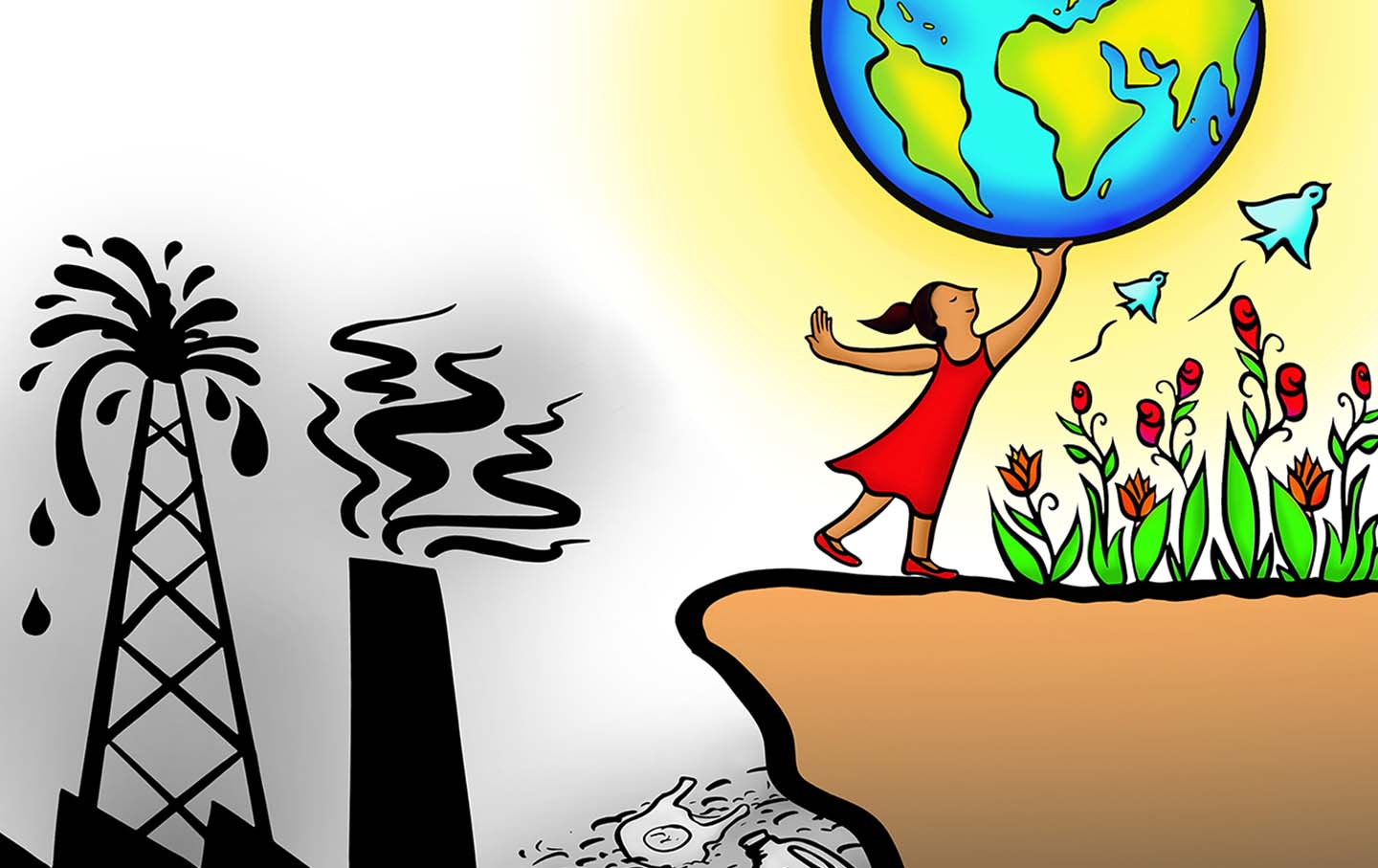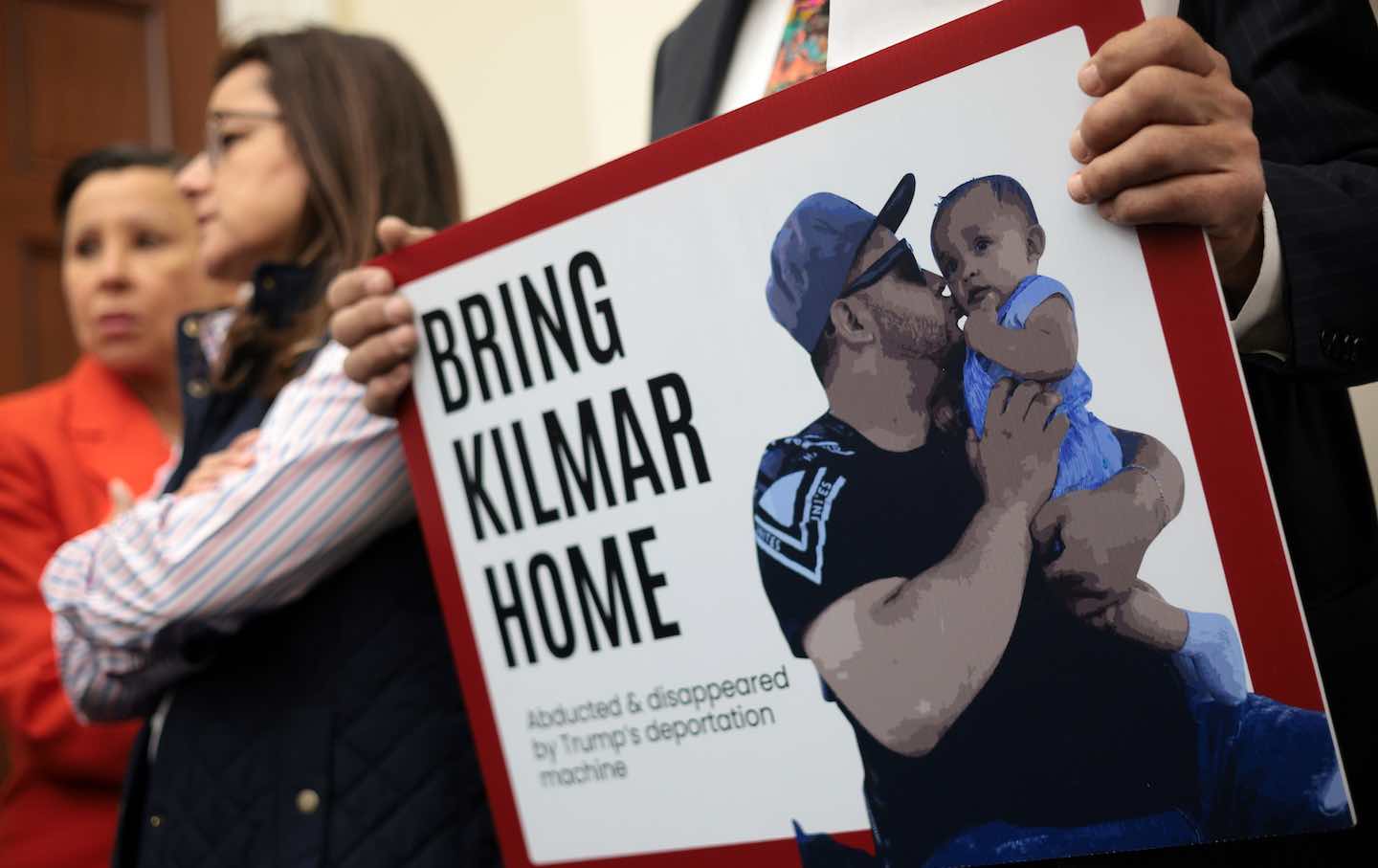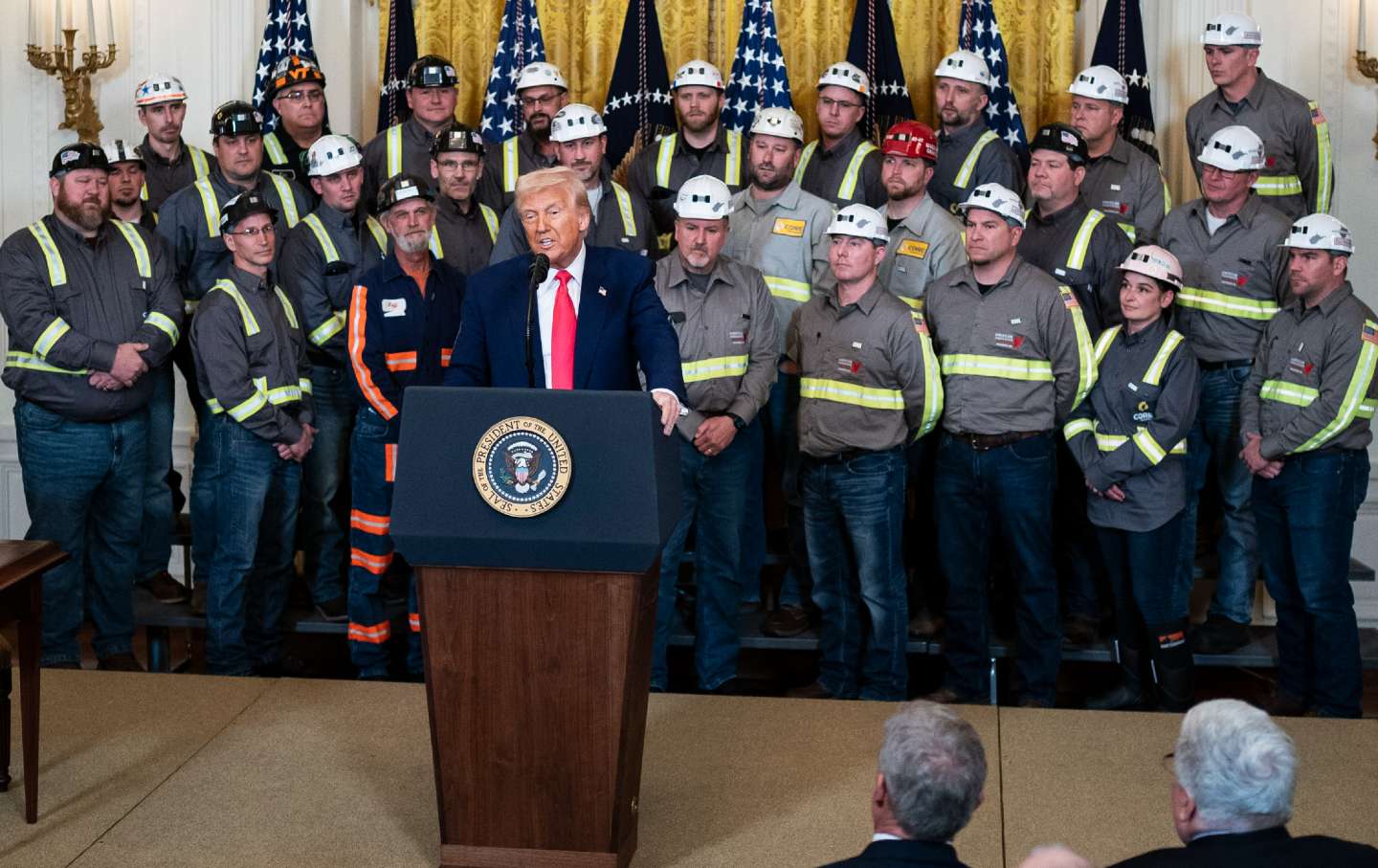The Rise of the Chinese American Far Right
The election showed what has been clear for some time: Chinese communities are becoming a new center of conservative power.

Residents of Rosemead, California, during a protest against a supportive housing project on October 22, 2024.
(helpmefilmthem / YouTube)Last month, hundreds of immigrant Chinese residents from the San Gabriel Valley just east of Los Angeles turned up outside a meeting of the Rosemead City Council. Many of them were wearing Donald Trump campaign apparel. They were there to protest the expansion of temporary shelters for single mothers facing domestic violence. A local far-right California State Assembly candidate, the Taiwanese American lawyer Long David Liu, had helped to mobilize the protesters. Many showed up just because they learned about the supposed dangers of the project circulating on the Chinese messaging app WeChat.
I was among a smaller group of counterprotesters rallying in support of the shelter proposal. We were outnumbered, surrounded, and harassed for hours by majority-Cantonese-speaking protesters. I was the only Cantonese speaker on our side, and I tried my best to reason with people even as some accused me of bringing in crime and endangering our communities. Our allies attending the city council meeting were eventually able to pass the measure, but only after a night of debate until four in the morning. They were also heckled by the protesters as they departed.
This type of right-wing mobilization by immigrant Chinese residents is not new in the San Gabriel Valley—the largest ethnoburb (a suburb with a large concentration of an ethnic minority group) for Chinese and other Sinophone diaspora in the nation. Temple City residents organized to successfully stop a proposal to convert a local motel into a shelter for the unhoused in 2017, followed by a similar outburst in the adjacent city of Arcadia in 2021. Protests have also sprung up in other immigrant Chinese communities nationwide. Earlier this summer, the first Chinese American New York City Council member from Brooklyn, Susan Zhuang, led a demonstration against emergency shelters for the unhoused in the ethnic enclave of Bensonhurst. Last year, Chinese residents in Brighton Park on the South Side of Chicago rallied against a planned migrant shelter.
These incidents reflect a dangerous trend in national politics: the growth of an organized Chinese American far right pushing for exclusionary policies around housing and increased policing in the name of “public safety,” which both the Democratic and Republican politicians are keen to support. And these communities are not just protesting—they’re also voting. Many heavily Chinese American areas shifted sharply to the right in the recent presidential election.
This emerging constituency is becoming a robust arm of national right-wing politics. They are building mass power in ethnoburbs and ethnic enclaves—where organized politics and levels of mobilization have traditionally remained weak.
The phenomenon shows that the most organized wing of our communities are immigrant Chinese American “petite bourgeoisie”—small-business owners, self-employed residents, and other professionals. Recent economic anxieties are inducing a crisis among the petite bourgeoisie, causing them to further identify with their white counterparts as a key social base for the far right. The racialized experience of Chinese Americans, who are also concentrated in large numbers in ethnic enclaves, allows petite bourgeoisie–led politics to identify shared points of connection with less politically conscious parts of the working class as well. To counter this trend, we must organize Chinese Americans around multiethnic campaigns that are tailored to their actual lived experiences—all with the goal of building working-class economic and political power.
Asian Americans, including Chinese Americans, have long occupied an ambiguous position in the US racial hierarchy. Neither Black nor white, they have still faced a long history of structural oppression. More distinctively, however, they have often been used as a wedge by white supremacy—typically by being framed as “model minorities”—to justify the subordination and contain the political mobilization of other non-white communities. Scholar Claire Jean Kim calls this “racial triangulation,” in which Asian Americans are afforded some social and economic advantages relative to other non-white people—even while still facing alienation and racism.
Historian Charlotte Brooks shows how Asian Americans’ relative privilege works in practice by contrasting the historical experiences of Asian and Black Americans in challenging housing discrimination in the suburbs. In the 1950s, Olympic gold medalist and Korean American veteran Sammy Lee championed racial inclusivity as an all-American ideal, while brandishing his anti-Communist credentials from speaking in State Department tours in South Korea, in part to win the approval of white residents in California’s Orange County to allow him to buy a house in their community. A year later, when a Black veteran, Harold Bauduit, tried moving into the same neighborhood, he was threatened with violence by a mob of white homeowners.
Thus, the then-overwhelmingly conservative residents of Orange County embraced Asian American immigration just as they hardened their opposition to Black people moving into their communities. Brooks writes that since the Cold War, majority-white suburban communities began to think that “Asian Americans’ cultural differences made them better neighbors than members of other minority groups” and “began to contrast them to the lack of values and the alarming militancy they attributed to other nonwhite people, particularly blacks.”
Today’s Chinese American–led mobilizations against emergency shelters reproduce the very rhetoric once deployed by white neighbors against communities like theirs. Asian Americans are now the second-largest ethnic minority group in Orange County. Republicans have been increasingly successful in attracting them, more so than Latino Americans. Fears about crime and public safety have become a top political issue galvanizing Chinese American and immigrant communities, along with other smaller Sinophone populations, from the Taiwanese to Hongkongers. These are partly informed by legitimate concerns about targeted anti-Chinese violence during the Covid pandemic, as well as the growth of Sinophobic rhetoric toward China from across the political spectrum. But the “Stop Asian Hate” movement has been weaponized as a bludgeon against Black-led and abolitionist calls to defund the police and fund social services.
This concern for public order—which bridges petite-bourgeoisie and working-class Chinese Americans—is further fueled by diaspora anti-communism, anger toward affirmative action, and transphobic fearmongering about gender-affirming care and bathroom access. As Matthew Shen Goodman puts it in a recent article on the rise of Asian American conservatives, “With anticommunists, merit obsessives, and law-and-order defenders, the tripartite structure of Asian-American conservatism should make for easy integration. As the number of Asians in this country grows, so too should the total number of Asian right-wing voters.”
In reality, fearmongering about crime by politicians, real estate, media, and commercial institutions has spiked just as research shows a contrary trend. Violent and property crime in California has declined by nearly 50 percent since 1993, with only a very minor increase since the pandemic’s start. Some evidence indicates that expanding shelters for the unhoused significantly reduces crime. Regardless, the level to which these immigrant communities appear willing to believe this disinformation reveals a deeper problem: They are not just duped—they are having their preexisting prejudices flattered. As has long been the case, Chinese Americans can be victimized while also reproducing structural oppression.
In certain conditions, Chinese Americans could be drawn to channel our sense of victimhood into militant political action in defense of our privileges, rather than finding genuine solutions for the oppression we face. In the absence of strong left-wing organizations, Chinese Americans’ concerns of public safety (some legitimate, and others purely racist) easily feed into right-wing fuel for increased policing, and cuts on social services that affect non-white and underprivileged communities—all in the name of “defending our communities.”
Growing economic uncertainty has also been key in the rise of the Chinese American far right. Large developers have systematically forced out longtime Los Angeles Chinatown businesses in the past decade. Some have relocated to the San Gabriel Valley, which is now also facing rising housing and retail costs. The region is also still struggling to recover from the economic ills wrought by the pandemic. The decimation of the hospitality industry during the pandemic has led to a rise in declassed small business owners, partly thanks to the sudden dip in Chinese tourism. This revenue source had kept the region’s economy afloat in past economic shocks. Wholesale trade—composed only of a small minority of Asian American businesses but responsible for more than a third of the total revenue from Asian American–owned businesses in San Gabriel Valley—has faced the largest job loss among the region’s major industries this past year.
In other words, the middle-class sensibilities among the region’s Chinese Americans are being threatened by growing wealth disparity and economic ills, especially since the onset of the pandemic. These communities are keen to look for solutions that the political status quo could not offer them. It’s no wonder, then, that, in the past few months, I witnessed more and more Cantonese small businesses, especially eateries, put up posters for Liu’s far-right campaign.
In the early 20th century, German socialist Clara Zetkin identified the crisis of the petite bourgeoisie, linked with the less-conscious elements of “all the politically homeless, the socially uprooted, the destitute and disillusioned” as the main social base of fascism. Many pundits have noted a similar dimension today in characterizing the Trumpian far right. Those who stormed the Capitol on January 6 were predominantly composed of a petite-bourgeoisie base of small-business owners. Big corporations will not offer them real solutions but are eager to help organize and fund these forces to build a reactionary mass movement against organized workers and left-wing movements.
Chinese Americans are the largest group of Asian American small-business owners. The amount of new Asian American small businesses soared at a much higher rate than the total number of US firms in the 2010s. But the pandemic abruptly threatened these gains: 90 percent of Asian American small businesses lost revenue in 2020, with the number of Asian American small-business owners shrinking by a quarter between 2020 and 2021.
This crisis of the Chinese American petite bourgeoisie, coupled with the experience of racial triangulation, makes Chinese Americans as a whole particularly susceptible to neofascism. These conditions make it more persuasive for Chinese Americans to side with their counterparts in white communities to defend their relative and conditional privileges. Eager to hold on to such privileges and aware that they are highly tenuous, Chinese Americans can become a powerful constituency for neofascist movements in times of growing systemic crises. In these conditions, Chinese Americans, commonly seen as politically passive, can emerge as a distinctively militant force that helps the far right deepen its roots in ever-growing ethnoburbs and ethnic enclaves.
Chinese and other Asian Americans’ longtime identification with the Democratic Party is no bulwark against this dangerous trend; on the contrary, it can be a crucial force in helping to drag the Democrats further right from within. This year, Chicago’s Nicole Lee and Brooklyn’s Susan Zhuang—both Democrats and the first Chinese Americans to be elected to their city councils from their districts—joined their large immigrant Chinese constituencies in vigorously opposing shelters for migrants and unhoused communities. Predominantly Chinese American districts across San Francisco were a battleground in the San Francisco mayoral race. The newly elected right-wing Democratic mayor, Daniel Lurie, won a majority of votes in almost all Chinese American–dominated areas, boasting a robust Chinese-speaking campaign team dedicated to each district. Lurie’s campaign manager, Han Zou, told Mission Local that Lurie’s firm support for increased policing to address public safety was key to his success.
Popular
“swipe left below to view more authors”Swipe →At the same time, this year’s election showed an expansion of Asian American voters for the Republican Party. There were a record number of Asian American Republican candidates running for the New York City Council. In the state Senate district encompassing Bensonhurst in Brooklyn, far-right candidate and former NYPD officer Steve Chan—who firmly supported Zhuang and Bensonhurst residents’ campaign against the unhoused shelter—unseated Democratic incumbent Iwen Chu. In California, Liu captured more than 40 percent of the votes against longtime Democratic Party incumbent Mike Fong, the biggest vote by a Republican in the district in over a decade. In New Hampshire, Lily Tang Williams, a gun-toting immigrant Chinese state Senate candidate who has played up her experience fleeing communism in China and identification with Trump during her campaign, had a much-lauded, fiery debate performance against her Democratic opponent.
Where is the left in all this? There has been an unprecedented surge of progressive momentum led by Asian American youth in San Gabriel Valley, from the movement for Black Lives to past counter-mobilizations for shelters for the unhoused against conservative immigrant Chinese protesters. But these endeavors are inchoate, and sustainable mass organizations with a strong base among the region’s working-class residents have not yet been able to take root. The weakness of the organized left in these communities signals an opportunity for the far right, which now offers a more coherent political alternative to the declassed Chinese American petite bourgeoisie. Zetkin observed that the failure of the organized left to adequately provide solutions to the declassed petite bourgeoisie and other communities afflicted by capitalism’s crises bolsters the rise of fascism.
These local Chinese American–led mobilizations against emergency shelters in cities like New York, Los Angeles, and Chicago (and surrounding neighborhoods) represent the growing threat of the far right. Figures like Chan and Zhuang dangerously provide an electoral outlet for these movements. But the most concerning aspect is the growing capacity of everyday immigrant Chinese residents to mobilize one another into militant street actions. Zhuang, a Democrat who regularly joins Republicans on the New York City Council in a so-called “Common Sense Caucus,” led a charge of immigrant Chinese tenants to protest a planned homeless shelter, tearing down barricades and even attacking a police officer. Near-daily protests to oppose the planned shelter have continued. During a similar clash in Arcadia about a planned shelter in 2021, protesters against unhoused immigrants were unafraid to intimidate, threaten physically, and dox their critics, including local progressive youth.
The Russian revolutionary Leon Trotsky once described the petite bourgeoisie’s role in fascist movements as a “battering ram” for the interests of big capitalists. The far right’s fearmongering about “public safety” has helped to transform Chinese communities into an increasingly reliable battering ram. Unsurprisingly, this militant movement for increased policing and defunding of shelters and emergency housing comes in the wake of the movement for Black Lives and amid ongoing tenants’ rights struggles. In other words, the Chinese American far right acts as a battering ram against Black liberation and housing justice movements—important pillars through which the left is rebuilding itself today—and against many of its own participants’ material interests.
But the far right’s capture of Chinese American communities is by no means unassailable. There is a long history of Chinese and Asian American participation in working-class and multiracial solidarity, a legacy that could be recovered. Some protesters at the Rosemead rally were concerned community members open to listening to our talking points about defending the shelters. Our counter-mobilization, albeit small, shows the seeds of what it would take to fight fascism in our communities: the independent organization of local Latino and Native residents, with some organizing with Rosemead Tenants Union, joining forces with Asian American organizers—some of us bringing experience from tenant struggles from the nearby Chinatown. One local Asian American high school student who was passing by stayed with us, and helped us leaflet, especially after witnessing how we stood our ground against the far right.
A crucial step is continuing to strengthen progressive and left-wing media channels tailored to immigrant Chinese communities to combat growing far-right talking points that have been spreading on social media outlets like WeChat, Douyin, and Xiaohongshu. The Xinsheng Project, Asian Pacific Environmental Network, Chinese for Affirmative Action, and Chinese Staff and Workers’ Association have been doing this kind of work.
Political agitation must also translate into action. We must recognize that the most powerful resistance to fascism comes from the workers building mass organizations to fight against the two-party system to strengthen class politics, and bringing the petite bourgeoisie with them. It is no coincidence that Sunset Park—one of the most working-class Chinese American–dominated neighborhoods in Brooklyn—most effectively resisted the red wave in their district. Progressive Queens Assemblymember Ron Kim successfully resisted challengers from the right in this election. Kim has become known for supporting Chinese working-class campaigns in his district, supporting issues like the home care workers’ campaign against the Chinese-American Planning Council for wage theft and sex workers’ demand for decriminalization.
A genuinely progressive movement among immigrant Chinese residents would also require us to recognize the shared experiences of exploitation with other working-class communities. Especially with the growing force of the right, no amount of political struggle would be effective without the concrete experience of organizing Chinese Americans to fight alongside their Latino, Black, and other neighbors for collective demands.
There are many issues that can unite, not divide, multiracial working-class communities; for example, fighting for rent caps as both small businesses and tenants face rising housing costs, just like how Pasadena Tenants Union helped win rent control and a just cause eviction law in its city in 2022. Grassroots Asian Rising has published an extensive toolkit (translated into Chinese and 10 other languages) with sample organizing workshops designed to train mass working-class communities in racial justice. Undocumented Chinese Americans will be reportedly among the first to be targeted under Trump’s deportation plan, creating an occasion to strengthen our communities’ participation in the larger immigrant justice movement.
There are also examples of working-class mobilization by Chinese Americans in solidarity with other allies in areas with stronger progressive presence. I am a tenant organizer in Los Angeles Chinatown with Chinatown Community for Equitable Development (CCED). CCED has been building a mass base of renters by organizing tenant unions in different buildings one by one to resist displacement and rising rents.
This network of multiethnic tenant unions allows CCED to link site-specific struggles to broad neighborhood-wide organizing. It also provides a mass platform to challenge working-class Chinese tenants to think beyond policing and embrace solidarity with unhoused residents. We have successfully defended against multiple cases of potential displacement, connecting tenants’ immediate struggles with a larger progressive vision for affordable housing and decreased policing. In 2022, Asian Americans were the largest ethnic minority group voting for LA City Council member Eunisses Hernandez, who successfully ran on an abolitionist platform and whose district includes Chinatown. CCED organizers and tenants did not hesitate to publicly pressure Hernandez when she later negotiated a backdoor deal with a landlord that would make tenants more susceptible to evictions.
Such organizing is possible in Chinese American communities. Chinese American youth—many of whom have been radicalizing in recent years thanks to the movement for Black lives, the experience of anti-Asian violence, local struggles for housing justice, and the anti-war movement in solidarity with Palestine—can play a key part in challenging the growing far right in our communities, often from their own elders. Chinese Americans form the largest part of the Asian American population, the fastest-growing racial group in the US. We have a decisive role to play in defeating the far right. If we don’t try, we might be the ones who wind up securing its power.

